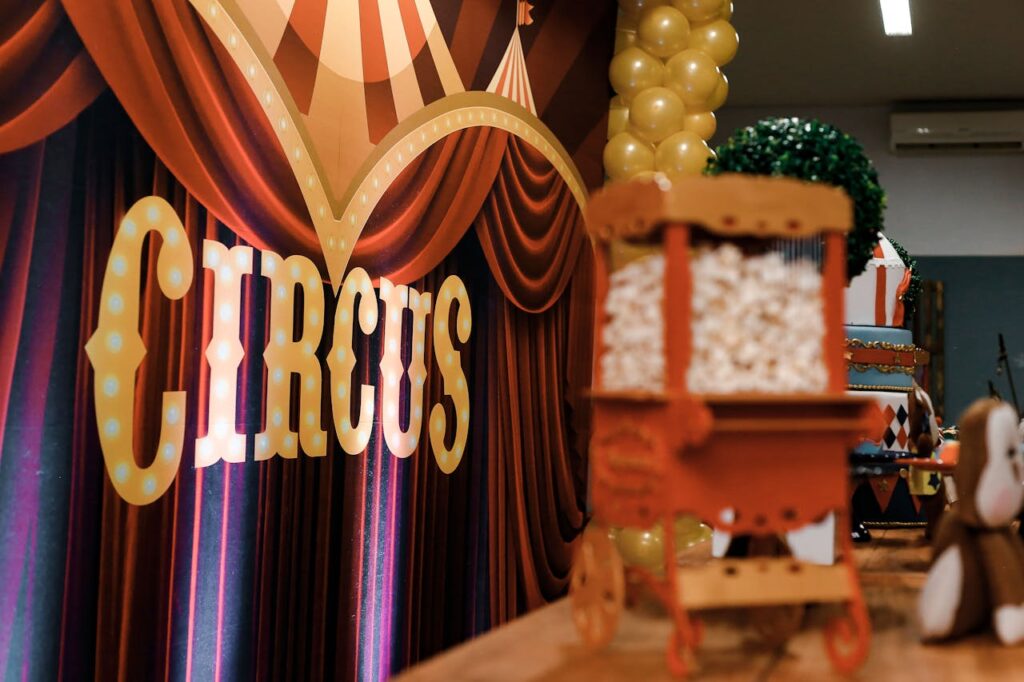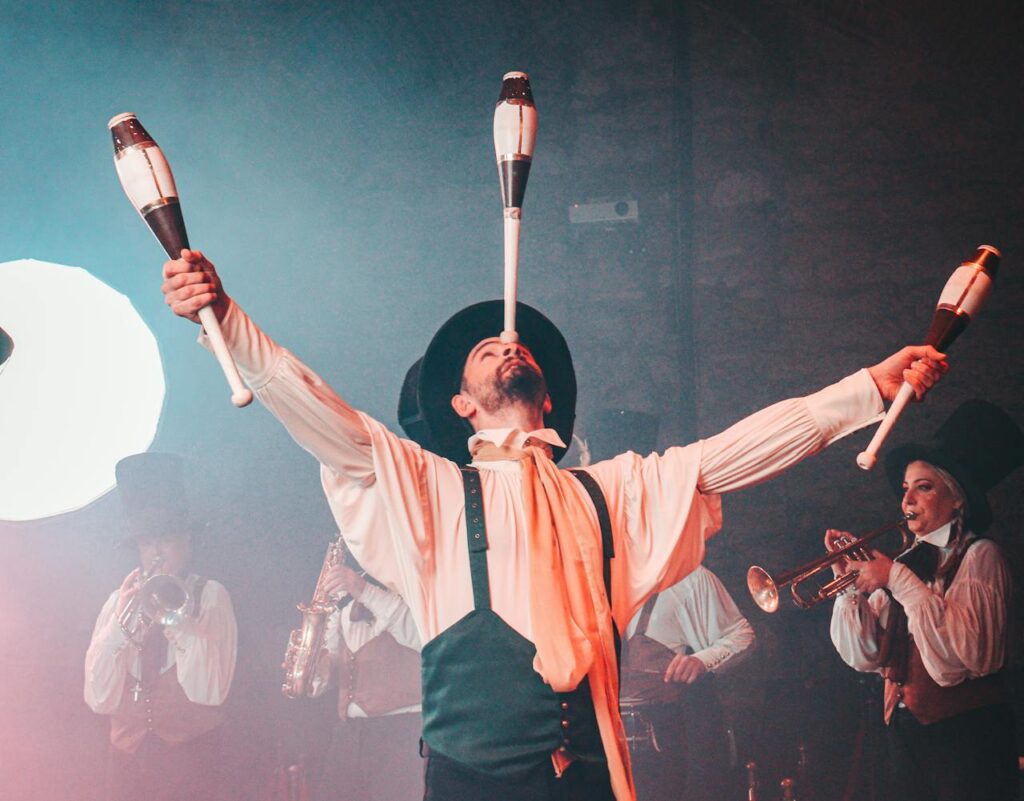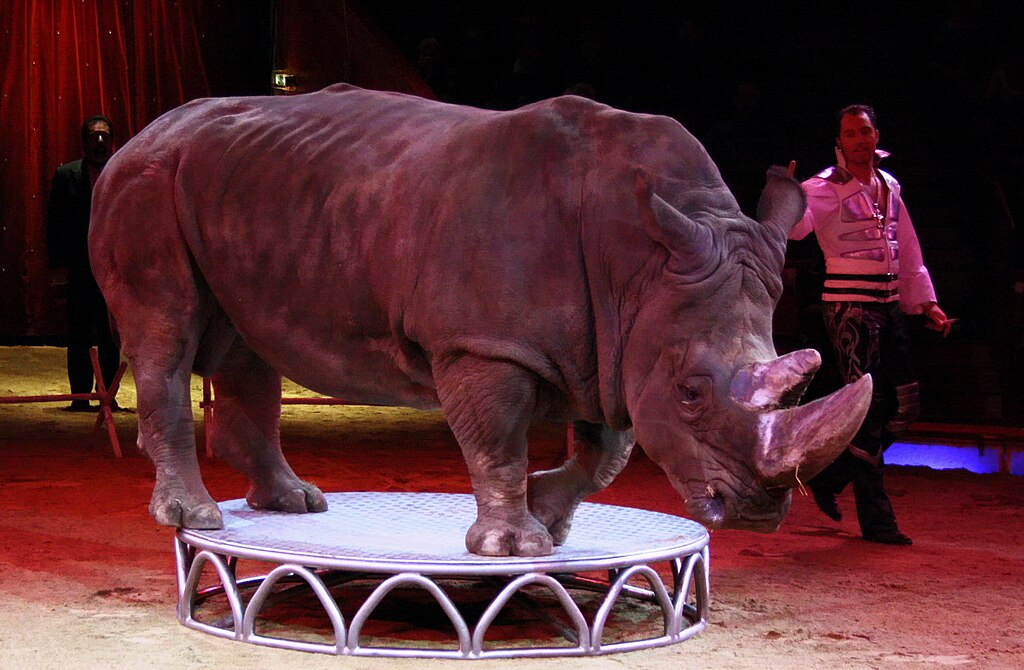See How This ‘Cruelty-Free’ Circus Replaced Animals With Holograms
A quiet revolution is happening under the big top. Instead of the trumpeting of elephants or the roars of lions, audiences are met with shimmering beams of light, holograms that dance, leap, and swirl before their eyes. What once symbolized controversy and cruelty has transformed into a breathtaking display of technology and compassion.
At the heart of this change is Germany’s Circus-Theater Roncalli, the first in the world to replace all live animal acts with mesmerizing 3D holograms. This shift isn’t just dazzling spectators, it’s redefining what a modern circus can be.

The Magic of a New Kind of Circus
When photographer Davide Bertuccio entered the tent of Circus Roncalli at the end of 2022, he encountered a scene unlike any traditional circus. The arena was filled with anticipation rather than the usual clamor of caged animals and the smell of hay. “Finding a circus without the din of animals, but the simple noise of people was a surprise,” he told CNN. What followed was a sensory experience that balanced artistry, emotion, and advanced projection technology in perfect harmony.
The moment the performance began, the audience was enveloped by an orchestrated blend of light and sound. Beams from eleven laser projectors merged to create moving, lifelike figures that glowed and interacted with the acrobats on stage. Instead of relying on spectacle through domination, Roncalli’s show built its magic through collaboration between humans and light. Each holographic creature, be it an elephant, a horse, or a swarm of fish, moved as though choreographed to the rhythm of the live performers, enhancing the emotional narrative of the acts rather than distracting from them.
The experience was deeply atmospheric. The ringmaster’s voice guided the audience through shifting worlds of fantasy while the holograms floated, galloped, or dived across the performance space. Bertuccio noted the serenity that replaced the anxiety often associated with live animal acts. The quiet awe that fell over the crowd reflected a sense of collective realization: that technology could evoke wonder and compassion simultaneously. The show did not mimic the old formula of spectacle but reinvented it for an era that values creativity and conscience in equal measure.
How Circus Roncalli Became a Pioneer
Circus Roncalli’s transformation from a traditional show to a technological marvel is rooted in its long-standing philosophy of reinvention. Founded in 1976 by Bernhard Paul, the circus was known for blending theater and nostalgia, creating poetic performances that focused more on storytelling than spectacle. By the 1990s, Paul made the pivotal decision to remove live animals from the program, years before the global animal welfare movement began to reach mainstream attention. This decision positioned Roncalli as a creative outlier, one that valued art over exploitation.

The next major turning point came in 2019, when the circus collaborated with a German augmented reality company to create a new kind of performance. Instead of returning to old traditions, Roncalli’s team chose to invest in immersive technology that could sustain the same emotional connection without harm. According to Smithsonian Magazine, the partnership allowed them to replace their live animal acts with full-scale holographic projections that could replicate everything from elephants to goldfish in breathtaking realism. The integration of these visuals marked a turning point not only for the circus but for the entertainment industry at large.
Roncalli’s pioneering approach extended beyond technology. It redefined how audiences interact with live performance by uniting human creativity, visual storytelling, and social consciousness. Every design choice, from the circular projection system to the synchronization of light and sound, was guided by a commitment to artistic integrity. The result was an experience that preserved the wonder of the circus while reshaping its moral foundation. By proving that compassion and innovation could coexist on the same stage, Circus Roncalli quietly set a new standard for entertainment ethics, influencing circuses and performance artists across Europe and beyond.
A Cruelty-Free Spectacle That Captures Hearts
Circus Roncalli’s success proved that audiences no longer needed live animals to feel awe and connection under the big top. Its holographic approach created a template for what ethical entertainment could look like, one that values artistry and empathy equally. The change resonated deeply with modern audiences who had grown increasingly uncomfortable with performances involving wild animals. The move toward virtual animal acts showed that compassion and creativity could coexist without sacrificing wonder.

This evolution in showmanship was not simply about replacing animals with technology but about transforming the emotional core of the circus experience. Instead of evoking shock or dominance, Roncalli’s performances invited empathy and shared joy. Viewers were captivated by the artistry of the holographic animals as they moved in sync with acrobats, clowns, and dancers, creating a sense of unity between performer and illusion. The laughter and applause came not from amazement at animal tricks but from admiration of human imagination and technical mastery.
Other circuses soon followed, inspired by Roncalli’s success and the positive reception from both audiences and animal welfare advocates. In France, L’Écocirque began presenting shows featuring holographic lions, elephants, and beluga whales accompanied by live orchestral music, blending innovation and spectacle in a way that thrilled crowds while honoring animal welfare. This broader shift in performance culture demonstrated that audiences craved experiences that were not only entertaining but also ethically sound.
Roncalli’s approach reminded the world that the magic of the circus was never truly about the animals but about the connection forged between audience and performer. By using technology to spark imagination rather than impose control, the circus reclaimed its original purpose: to astonish through creativity, skill, and heart.

The Global Movement Away From Animal Acts
The transition away from animal performances has evolved from isolated reform into a worldwide cultural and legislative movement. Many nations have recognized that the traditional circus model, once a cherished form of entertainment, must adapt to the moral standards of modern society. According to the Animal Legal Defense Fund, more than 150 U.S. cities and counties now restrict or ban animal acts, while entire states such as New Jersey and Hawaii have implemented comprehensive prohibitions. On a global scale, over 40 countries have taken similar action, each reflecting growing public support for animal welfare and ethical entertainment.
This transformation has been fueled by years of advocacy from animal rights groups, shifting consumer attitudes, and the financial strain of maintaining traveling animal shows. Public awareness campaigns have exposed the hardships animals face during transportation and performance, leading to a dramatic shift in audience expectations. Many people now associate the traditional use of wild animals with cruelty rather than wonder.

European nations have taken a particularly strong stance. In Italy, Parliament has advanced legislation to eliminate all animal acts, a step that aligns with similar reforms across France, Belgium, and Norway. These legal measures have encouraged circus operators to explore creative solutions, from augmented reality displays to fully digital performances inspired by Roncalli’s innovation. The message is clear: entertainment that respects life and the environment resonates more deeply than outdated traditions ever could.
This movement represents more than a legal change; it is a social redefinition of what it means to be amazed. The focus has shifted from domination over nature to collaboration with creativity. By embracing technology and compassion, the modern circus is becoming an emblem of cultural progress. Roncalli’s holographic animals symbolize not only a technological breakthrough but also a moral awakening shared by audiences worldwide.
The Tech Behind the Wonder and Its Deeper Meaning
Circus Roncalli’s innovation relies on a precise blend of engineering and artistry. Eleven laser projectors encircle the stage, casting high-resolution imagery onto a metallic net suspended above. The setup is handled by a small team that assembles and removes the system between acts with military precision, ensuring the performance flows smoothly.
A single operator manages the holographic projections, synchronizing them with the acrobats, clowns, and dancers in real time. Each movement is timed perfectly, making the digital animals appear to breathe and move naturally within the performance space. The illusion feels alive yet ethically sound, allowing audiences to experience wonder without discomfort.
This harmony between human performance and digital creation elevates the circus into an art form that merges compassion with innovation. The holograms do more than entertain; they reflect a cultural shift toward creativity that respects life. Roncalli’s achievement proves that technology can amplify emotion, transforming spectacle into a story of empathy and imagination.
What the Future Holds for the Circus
As circuses worldwide face dwindling attendance and rising ethical concerns, Roncalli’s reinvention offers a roadmap for survival. Spectacles can still capture imagination, they just need to evolve with their audiences.
If the goal of circus art has always been to astonish, then perhaps holograms are the most authentic continuation of that spirit. They blend storytelling, performance, and wonder in a way that honors both human and animal life.

In a world increasingly defined by innovation, the most heartwarming progress may come not from adding more, but from taking less. And under Roncalli’s tent, that absence glows brighter than any spotlight.
Loading...

